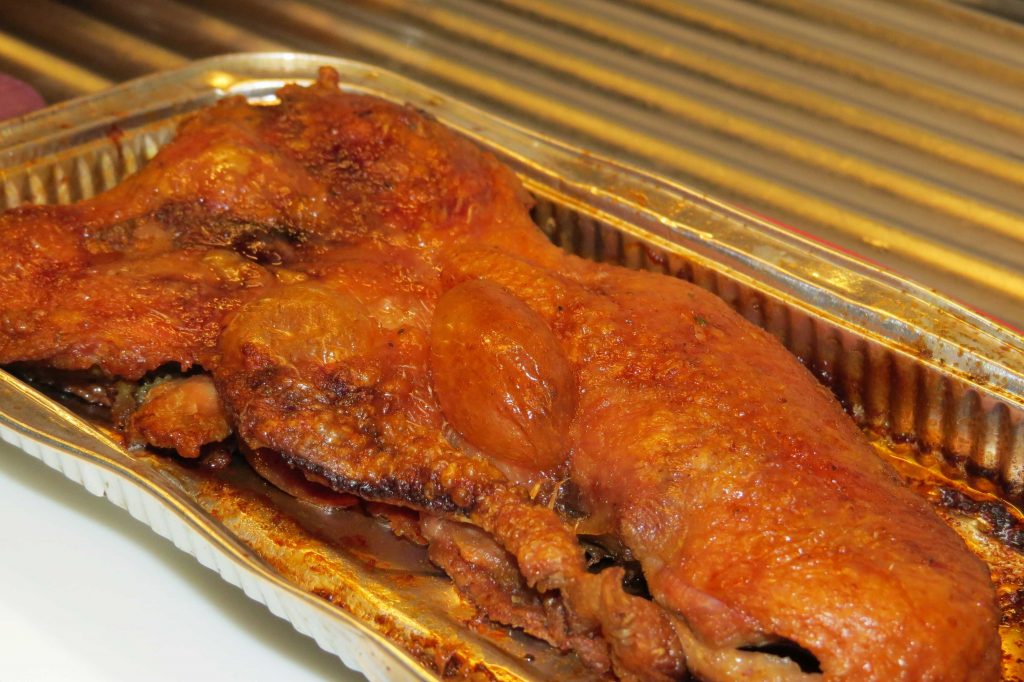It is hard to imagine Asian cuisine without rice. In 2017, almost 760 million tons of rice were harvested on earth, of which around ten percent went into global trade. Ninety percent of the rice harvest is eaten directly in the countries where it is grown.
Rice was originally cultivated in tropical Southeast Asia. As early as several thousand years before Christ, rice was cultivated in the Yangtze Delta region in southern China: Here, traces of rice grains and husks were discovered during excavations.
But it was not only the Chinese who cultivated rice so early: In India, rice cultivation dates back to 1500 BC. The best-known variety of rice, Oryza sativa, is even said to have originated in India. But not all sources agree here: China is also named as the first country to cultivate Oryza sativa.
The rice plant
The rice plant is an annual short-day plant that grows up to 1.50 meters tall: this means that a rice plant must be reseeded every year. The term short-day plant refers to plants that require a relatively short period of light (about 8 hours) followed by a longer period of darkness (about 16 hours) to grow.
In many Asian countries, rice is still harvested by hand today: Typically, a rice farmer brings in help from friends and neighbors to manage the harvest.
The rice plant forms panicles just under 30 cm long with single-flowered spikelets on which the rice husks are attached.
Rice harvesting
In Japan, special combines have been developed that have been specialized for rice harvesting: But it is the exception that rice is harvested mechanically.
For 60 percent of the world’ s population, rice is a staple food. Particularly in Asia, harvesting rice by hand is part of the rice culture. When rice is harvested by hand, the rice fields are harvested with a sickle. In Asian countries, there are many myths and rituals related to rice harvesting. For example, in Indonesia, only the panicles are cut – the stalks are left in the field in order not to disturb the spirits.
After the harvest, the rice is laid to dry for a few days before it is threshed.

Rice in European culture
In the first millennium B.C., knowledge of rice cultivation reached Mesopotamia: It reached Mesopotamia via Persia and India. As part of the Alexander campaign in the 4th century BC, Alexander the Great conquered Mesopotamia. Around this time, Greeks adopted rice cultivation. Thus, European culture came into contact with rice cultivation for the first time.
Starting in Syria, rice found its way to Egypt, North Africa, Sicily and Spain in the eighth century AD: Similar to the spread of coffee in Europe, port cities took a central role in the spread of rice. To this day, rice is cultivated in Spain and Italy.
Rice reached Central Europe via Venice: in Europe, rice was initially anything but a staple food. In the 17th century, rice was processed into sweet desserts in Europe and was reserved for wealthy social classes.
It was not long before rice also reached the European colonies on the North American continent: from 1694, rice was cultivated in South Carolina.
It was not until the 19th century that rice gained status as a staple food in Europe: between 1836 and 1880, rice consumption in Germany increased tenfold. The importance of rice as a festive food increasingly faded: after rice was first served in Europe, it took several centuries before the benefits of rice as a staple food were recognized.
Rice varieties
There are nearly 5,000 varieties of the rice plant: about 1,400 of them are cultivated. Chinese-American chef Ken Hom divides the most common varieties of rice into three categories: Long-grain rice, short-grain rice and glutinous rice. According to Ken Hom, long grain rice is the most commonly used type of rice in Chinese cuisine, whereas short grain rice is often served in northern China. Also, short-grain rice contains more starch than long-grain rice.
Glutinous rice occupies a special position: glutinous rice contains more gluten than other types of rice. Therefore, glutinous rice is mainly used for pastries, rice pudding and fillings.
Rice wine and vinegar are also made from glutinous rice.
Contrary to what is often assumed, wild rice is not a subspecies of the rice plant, but forms its own cereal genus.
If you look in an Asian cookbook, it is hard to imagine life without rice: rice serves as the foundation for numerous Asian dishes.
Rice contains extremely little fat, but complex carbohydrates that are digested more slowly by the body and therefore satiate for longer. In addition, rice grains contain B vitamins that keep the skin, nerves and metabolism healthy.
It is not without reason that rice is a staple food for over half of the world’s population.
Cover picture: Rice with vegetables and canard, © Simon von Ludwig, all rights reserved
The Brockhaus and Bertelsmann encyclopedias and some cookbooks by the American-Chinese chef Ken Hom were used as sources.

 Deutsch
Deutsch